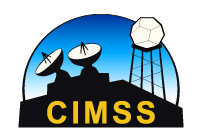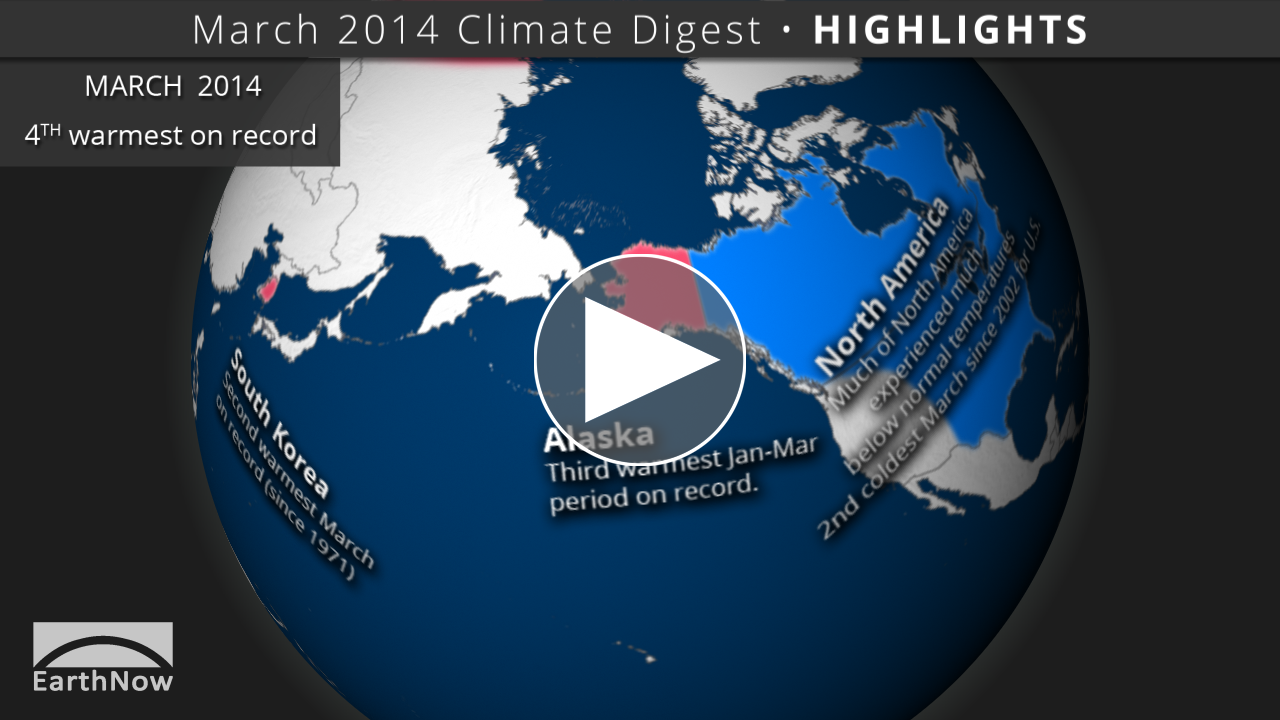 Overview
Overview
Each month, we will provide information regarding the previous month’s climate. Overall, preliminary data analysis suggests that global temperatures for March 2104 (land and ocean surfaces combined) was the fourth highest on record for the month of March. However, colder than average conditions persisted in the continental United States. Meanwhile, the state of Alaska and most of Europe experienced warmer than normal conditions.
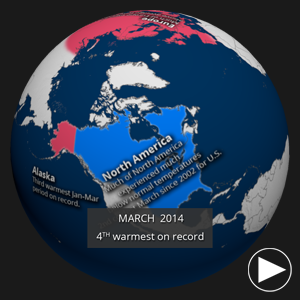 Highlights Dataset
Highlights Dataset
Dataset: 20140423 EarthNow: March 2014 Highlights
Dataset: 20140423 EarthNow: AUDIO March 2014 Highlights
This dataset shows some of the major March weather and climate highlights from the National Climatic Data Center’s (NCDC) monthly global climate analysis, and serves as an overview of what can be discussed in the datasets that follow. Highlights are noted below.
- Alaska: Persistent high temperatures.
- North America: Much of the U.S. and Canada experienced below normal temperatures.
- New Zealand: Driest March on record.
- Europe: Above average temperatures.
- Madagascar & Mozambique: Cyclone Hellen affected thousands.
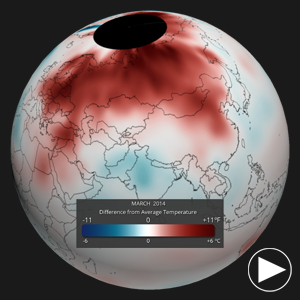 Global Temperature Anomalies Dataset
Global Temperature Anomalies Dataset
Dataset: 20140423 EarthNow: March 2014 Temperature Anomaly
Dataset: 20140423 EarthNow: AUDIO March 2014 Temperature Anomaly
- Using the real-time Monthly Temperature Anomalies dataset is a great way to convey where some of the warmer and cooler than average areas were in March, including those mentioned above in the highlights.
- The combined global land and ocean average surface temperature for March was the 4th warmest on record (since 1880).
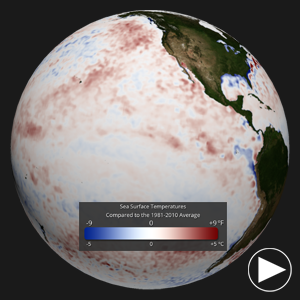 Sea Surface Temperature Anomalies Dataset
Sea Surface Temperature Anomalies Dataset
Dataset: 20140423 EarthNow: March 2014 SST Anomaly
Dataset: 20140423 EarthNow: AUDIO March 2014 SST Anomaly
- The real-time sea surface temperature anomaly dataset is a great way to visualize the El Niño – Southern Oscillation (ENSO) in the eastern Pacific Ocean.
- Global water temperatures were the fifth warmest for March on record.
- Remember blues indicate cooler than average temperatures and reds indicate warmer than average temperatures (white: average).
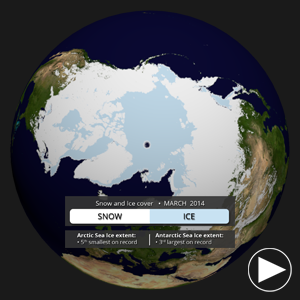 Snow and Ice Cover Dataset
Snow and Ice Cover Dataset
Dataset: 20140423 EarthNow: March 2014 Snow and Ice Cover
Dataset: 20140423 EarthNow: AUDIO March 2014 Snow and Ice Cover
- Aside from helping to illustrate seasonal changes, the real-time Snow and Ice Cover dataset is a great way to convey sea ice change through time, including discussing how the current sea ice extent compares to other noteworthy years.
- The Arctic sea ice extent for March 2014 was the fifth smallest since satellite records began in 1979.
- In Antarctica, the sea ice extent was the third largest on record.
Seasonal Outlooks
- Also be sure to check out the newest 3-month seasonal outlooks for May-July 2014.
- Global Temperature Outlook
- Global Precipitation Outlook
- U.S. Drought Outlook
Where do I find the datasets?
-
First, check your SOS system to make sure it’s not already in the EarthNow category.
-
If not, you can download the datasets and playlist files from this FTP Site.
-
Then download and use playlist files at the top of the page (or create your own) and make sure they are in /home/sos/sosrc or /home/sosdemo/sosrc.
-
More detailed information here
Helpful Resources for More Information
-
http://go.wisc.edu/3nd6pg National Climatic Data Center (NCDC)
-
http://go.wisc.edu/9y2618 About ENSO (El Niño/La Niña)
-
http://go.wisc.edu/1nx2n3 NCDC’s Global Climate Report
Credits:
EarthNow Team
NOAA
References:
NOAA National Climatic Data Center, State of the Climate: Global Analysis for March 2014, published online April 2014, retrieved on April 23, 2014 from http://www.ncdc.noaa.gov/sotc/global/.





